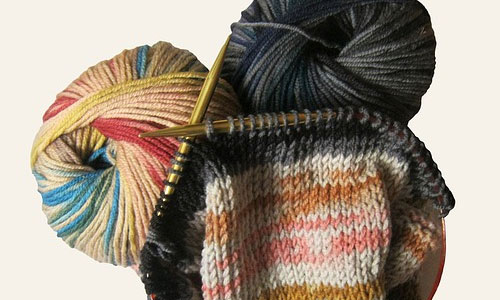5 Tips to Improve Your Knitting Skills

It is a senseless misconception that knitting, stitching and embroidery work is only for old women. Knitting has made a comeback and if you knit your own woolens, you are regarded as a fashionably forward, hard-working and independent girl. If you wish to indulge in this fun as well as useful hobby, then you could make do with these tips.
1. Work with circular needles
When people start off with knitting, they usually begin with straight needles. However, as you advance in this hobby, you get introduced to circular needles as they are much more comfortable to work with and faster than the traditional straight needles which out strain on your arms. Use circular needles for flat knitting in big pieces like sweaters or pullovers. Such needles are also more compact for the user to use, and hence are apt for traveling or knitting while on the move.
2. Learn to create bobbles
Bobbles are little balls of wool that are stitched into socks, gloves or beside buttons to make them look cute. However, many a time, while making bobbles, holes are created and to deal with them you could purl the stitches present before and after the bobble stitch, a bit more tightly than normal on the next row. This will help closing up the hole. You could also attempt purling through the back loop on the next row or twisting the bobble stitch.
3. Use dropped stitches to give a funky look
Dropped stitches are looked upon as a fault by traditional knitters because they make the fabric loose and creates holes. But, new age knitters have utilized this way of knitting for accessories like wristbands, necklaces and scarves because they look edgy and funky. For a dropped stitch, instead of just wrapping the yarn around the needle once, to make a knit or purl stitch, wrap it twice or thrice. Conduct this action on every stitch across the row and when you get to the next row, simply knit or purl the stitch and shift the extra wraps off the needle. Give your piece a slight tug to straighten out the dropped stitches when you get to the end of this row.





